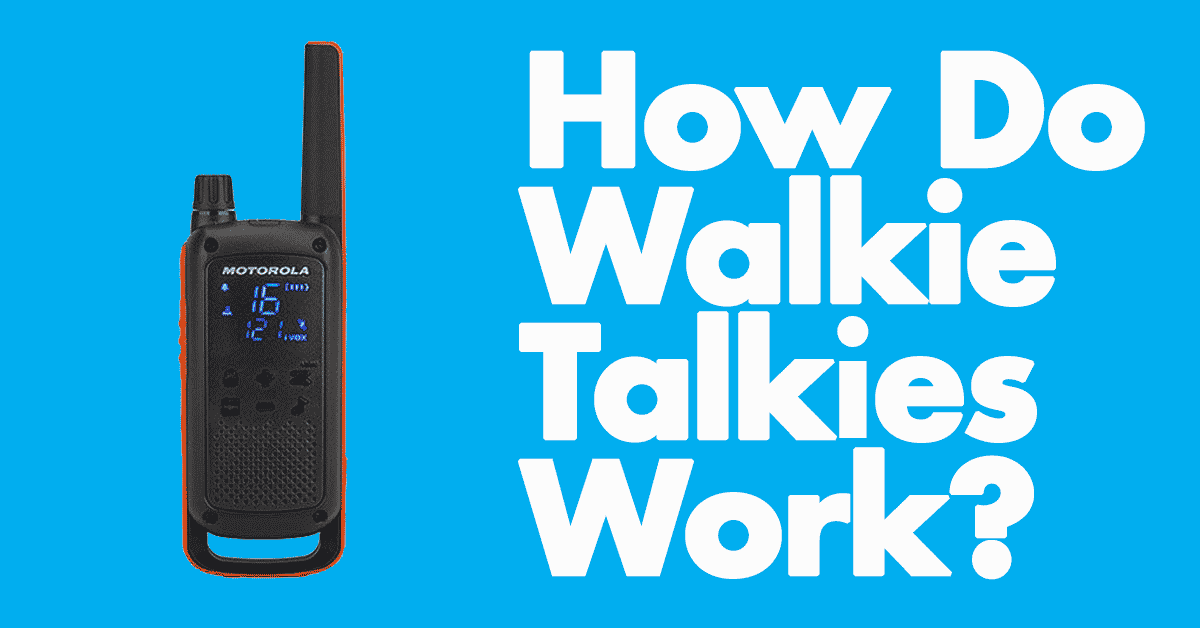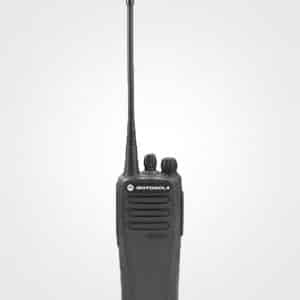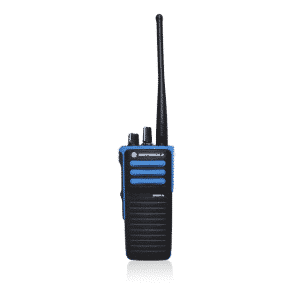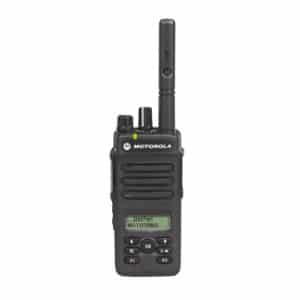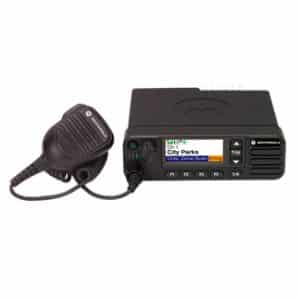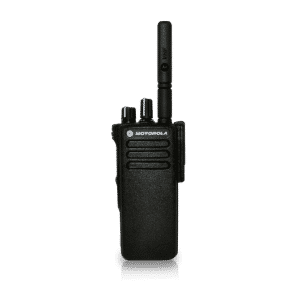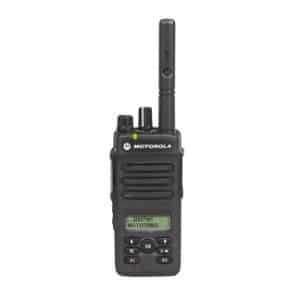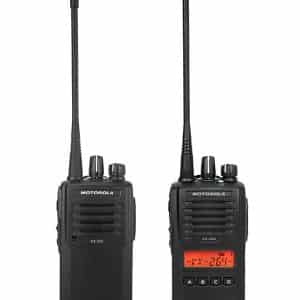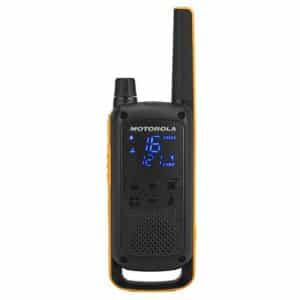Guides
How Do Walkie Talkies Work?
Table of Contents
How Do Walkie Talkies Work?
Do you (read this) copy? Yes? Amazing. (Please ignore our awful pun, but do read on to answer that age old question, how do walkie talkies work?)
If you are reading this then you probably already know what a walkie talkie is. Yes, “do you copy?’ was included in my opening statement on purpose.
Since you know what a walkie talkie is, let’s see how it works.
Along with improvements in technology, product design, and user preferences, designs and features of walkie talkies have also evolved. Despite this though, the basics have remained the same.
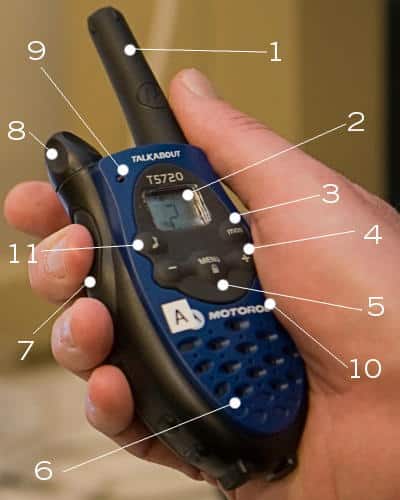 What are the basic features of a Motorola walkie talkie?
What are the basic features of a Motorola walkie talkie?
1. An antenna that transmits and receives radio waves
2. LCD Screen showing channel number, battery life etc.
3. Monitor button: turns the walkie talkie in to listening mode kind of like a baby monitor
4/5. Menu buttons to change function, lock the handset, change channel etc
6. Loudspeaker (kind of self explanatory)
7. A Push to Talk Button or PTT button for short.
8. On / Off Button and volume control
9. LED indicator light that indicates when channels are busy or in use.
10. Microphone, unlike most models this one has a separate loudspeaker and microphone.
11. Transmit Call Tone, send a message to all other handsets on this channel that you want to speak. A great way to silence radio traffic.
Not all walkie talkies have the same functions or features of the above Motorola model, but this was a good example of all the possible features.
Certainly, you know that a walkie talkie is a handheld battery-operated device. This means that asides the aforementioned features of a walkie talkie, they also come with a battery compartment and the battery (and a charger of some sort).
Walkie Talkie Radio Frequencies
 Before continuing on how they work, it is important to mention that radio waves are a crucial part of their functions. Like every radio, communication using the walkie talkie is done via radio waves. One-way radios like radio transmitters allow for only the transmission of communication on these radio waves in a one way manner. That is, the broadcasting station is the only one who can send information on the radio frequencies while the listeners can’t.
Before continuing on how they work, it is important to mention that radio waves are a crucial part of their functions. Like every radio, communication using the walkie talkie is done via radio waves. One-way radios like radio transmitters allow for only the transmission of communication on these radio waves in a one way manner. That is, the broadcasting station is the only one who can send information on the radio frequencies while the listeners can’t.
This is not the case with walkie-talkies, also known as two-way radios. With these, the radio frequencies allow for the transmission and reception of information across the same frequency. It is on this principle that walkie talkies are built and this is the major function of the antenna on these two way radios. These antennas search for frequencies and pick up information on these.
Because these are two-way radios, it makes sense that at least two people get them for the purpose of communicating with one another. This had to be mentioned as it is crucial to the next working process of walkie talkies. There are regular frequency channels that have been reserved for use by walkie talkies. When these walkie talkies are obtained by everyone in the group, for whatever purpose they might deem fit, they can all tune in to the same frequency channel. This way the communication within that group remains within the group. This is, howe

ver, not always the case as other walkie talkie users not in the group but in close distance to the group can stumble on that channel, perhaps while searching for a channel for their use, and pick up information that they shouldn’t be privy too.
To work around this, there are now privacy channels that guarantee a more secure communication among groups using the same walkie talkie. As a result of this feature, walkie talkies with privacy channels cost more than the regular ones. It is worth mentioning that walkie talkies used by military personnel are a specialised one as the communication is encrypted, such that anyone who stumbles on the frequency channel cannot decode information being passed. If security and quality of your two way radio system is important to you, we would recommend a licensed system. Here is a great article on how to get a Two Way Radio Licence in Ireland
Push To Talk PTT Button
Now that we know how communication is made possible, let’s look at how to use the walkie talkie to actually communicate.
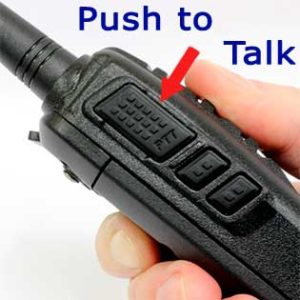 All walkie talkies are automatically set on the “receiver” mode. That is they, are always ready to receive information from anyone else on the frequency. This is why there could be a static that comes from them when in this default receiver mode. When someone wants to talk, he presses down on his PTT button and this sets his walkie talkie into the “transmitter mode”. This person says what needs to be said into the microphone and sometimes uses “over” to indicate that they have reached the end of their information.
All walkie talkies are automatically set on the “receiver” mode. That is they, are always ready to receive information from anyone else on the frequency. This is why there could be a static that comes from them when in this default receiver mode. When someone wants to talk, he presses down on his PTT button and this sets his walkie talkie into the “transmitter mode”. This person says what needs to be said into the microphone and sometimes uses “over” to indicate that they have reached the end of their information.
The words said are transmitted into radio waves and transmitted across the channel, these waves are converted into electric currents that the receiver’s antenna picks up and the loud speakers reproduce the speaker’s voice and the information sent. As radio waves are a part of the electromagnetic spectrum, with a speed as that of light, these information is passed from speaker to receiver almost immediately.
Factors That Affect Your Walkie Talkie Range and Clarity
How do walkie talkies work in the real world? Two factors crucial to the use of walkie talkies are distance involved and absence of hindrances. When there is a lot more distance to be covered, the speed of receiving the communication could be slow, information passed could be unclear, or transmission is just impossible. The presence of hindrances like mountains, tall trees, and tall buildings between receivers can also cause these to happen. In a case with no hindrance, walkie talkies can transmit across 30 miles.
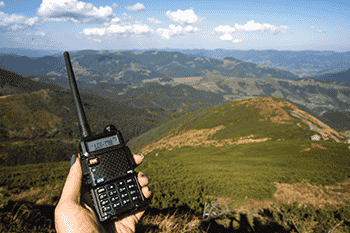 Considering these, you want to ensure that you are not so far away from others in your group, especially when in an area with a lot of these hindrances.
Considering these, you want to ensure that you are not so far away from others in your group, especially when in an area with a lot of these hindrances.
It is notable to mention that due to events like lost transmission and indiscernible communication, walkie talkies are now being made with an emergency feature, to reach emergency responders or authorities.
Now that you know these about walkie talkies, you can go ahead to buy these for use on your camping, hiking, or fishing trips. Seeing as many of these adventure sites may not have adequate network coverage, if any at all, your walkie talkie will come in handy. Pun intended.
Well suited for your adventure, they also tend to have amazing battery life so you can stay in touch with the other person or persons in your group, for an extended period of time.
More than just for use on adventure though; you can also use these in cases where one person has to pass information to a large group. This could be on a construction site, from a foreman to workers or at an event, from the event coordinator to the workers. This can also be used in homes to stay in touch with members of family, over a short distance.
It doesn’t matter how you use your walkie talkie, the mode of action remains the same. Hopefully we have answered the question of how do walkie talkies work.
Over and out.
We carry a full range of walkie talkies and would love to discuss them with you, so please feel free to contact us, visit our Facebook page, or have a look at our full Two Way Radios For Sale range. We also have a great article on Walkie Talkie Security and if they can be tracked or hacked.

